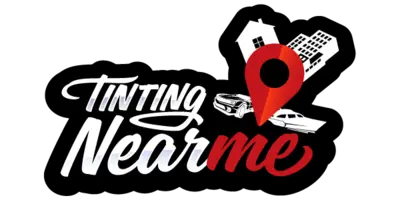2024 New Hampshire Legal Tint Laws Explained
Navigating the complexities of window tint laws can feel as challenging as solving a Rubik’s Cube – one misstep and the whole puzzle is off. In New Hampshire, the 2024 legal tint laws certainly aren’t exempt from this complexity. With specific regulations on tint darkness, reflection, dual side mirrors, and even medical exemptions, it’s crucial you’re up to speed. But don’t worry – we’re here to clarify these laws for you, ensuring your ride abides by the Granite State’s regulations. Stay tuned as we break down the key aspects of these laws, layer by layer, to help you stay on the right side of the law.
The information on tintlaws.com isn’t legal advice; consider it a starting point. Always verify with local and state authorities, as the final decision rests with you. We are not lawyers. For specific legal guidance, we can refer you to legal experts. Remember, knowledge of both state and local laws is essential, and even law enforcement might not be fully updated. We aim for accuracy but advise double-checking for the latest regulations.
Key Takeaways
Key Takeaways
Key Takeaways
- New Hampshire has specific window tint laws that regulate the maximum allowable tint for different windows in vehicles.
- The front windshield must allow at least 70% of light to pass through, while the front side windows must allow at least 35% of light to pass through.
- The rear side windows and rear window can have any level of tint darkness.
- There is a provision for medical exemptions to the tint laws, which require an application and supporting medical documentation, and the approval process is conducted by the Commissioner of the Department of Safety.
New Hampshire’s Tint Darkness Laws
Diving into the specifics of New Hampshire’s tint darkness laws, it’s crucial to understand that the degree of tint is measured by Visible Light Transmission percentage (VLT%), which determines the amount of light legally allowed to pass through your car windows. This principle is fundamental to New Hampshire law and impacts how window tint laws are enforced.
In New Hampshire, the tint darkness regulations differ for sedans and SUVs/vans. For instance, your car window tint must meet certain VLT thresholds for the windshield, front side, back side, and rear windows. In 2021, a new legislation increased the VLT allowance on the front side windows to 70%, offering more flexibility for New Hampshire Window Tinting.
Window tint in New Hampshire serves more than just a cosmetic purpose. It can reduce glare and heat by reflecting incoming light, enhancing your driving experience. However, restrictions apply. New Hampshire tint laws prohibit metallic or mirrored appearances on both front and back side windows.
Further regulations in New Hampshire include the requirement for dual side mirrors if the back window is tinted. There are no explicit restrictions on tint colors, and medical exemptions are available with specific VLT allowances.
Remaining compliant with window tint rules is your responsibility. Remember, the New Hampshire DMV: Tinted windows regulations are in place to ensure your safety and the safety of others on the road. So, stay informed, follow the guidelines, and enjoy the benefits of window tinting while adhering to New Hampshire law.
Reflection Regulations for Window Tints
Moving on to reflection regulations for window tints, it’s essential to note that while your car’s window tint can reduce glare by reflecting incoming light, New Hampshire law prohibits any metallic or mirrored appearance on both front and back side windows. This is a crucial aspect of New Hampshire tinting, as it helps preserve visibility for all road users.
Understanding the window tinting laws is vital, especially if you’re considering tinting your SUV. The Tint reflection for SUV rules and regulations differ from those for sedans. Visible light transmission (VLT) is a key element to consider. It determines the percentage of visible light allowed through your vehicle’s windows. The recent legislation permits 70% VLT on front side windows and mandates that windshield tint be non-reflective and no darker than 35% VLT on the top 6 inches.
The New Hampshire window tint laws also require dual side mirrors if the back window is tinted. There are no explicit restrictions on tint colors and no certification needed for film manufacturers in New Hampshire. However, medical exemptions permit 35% VLT on the windshield and the driver’s side windows.
Penalties for violating tint laws in New Hampshire range from non-moving traffic violations to more severe consequences, depending on local interpretations. The New Hampshire DMV emphasizes that Tinted windows must comply with reflection regulations for window tints to ensure road safety. Compliance with these regulations is not just about abiding by the law; it’s also about your safety and the safety of others on the road.
Additional Tinting Rules in New Hampshire
While taking into account New Hampshire’s regulations on tint reflections, it’s equally important to understand the additional tinting rules in the state. These laws are in place to ensure the safety of motorists and pedestrians, so your knowledge and adherence to them is crucial.
- VLT Requirements: For your car, allowed tinting in New Hampshire is subject to Visible Light Transmission (VLT) laws. The state mandates that front side windows must allow more than 70% of light in. This ensures that drivers have a clear, unobstructed view of their surroundings.
- Mirror Requirements: If you have tinted your car’s back windows, you are required by law to have dual side mirrors in New Hampshire. This is to compensate for any reduced visibility due to the tint.
- Product Certification: In New Hampshire, film manufacturers aren’t required to certify the VLT of their products. This means you’ll need to ensure any tinting product used complies with state law.
- Medical Exemptions: New Hampshire provides for medical exemptions, allowing a 35% VLT on the windshield and driver’s side windows. This is a special provision, and you’ll need proper documentation to avail it.
Breaking these tinting laws can result in non-moving traffic violation penalties. So, remember, while tinting your car windows can provide benefits like reducing heat and glare, it’s essential to stay within the legal boundaries set by the state of New Hampshire.
Locating Official Tint Law References
To ensure your window tinting adheres to New Hampshire’s regulations, it’s vital to familiarize yourself with official references such as New Hampshire statutes section 266:58-a and House Bill 224 which provide comprehensive details on the state’s tinting laws. These references lay out the specifics of car tint regulations in New Hampshire, including the permissible tint darkness and reflection for different types of vehicles such as sedans, SUVs, and vans.
For instance, the state law outlines that tint in New Hampshire should not exceed a certain limit of light transmittance and reflectance to ensure visibility for the driver and other road users. It also provides details on side mirror and color restrictions for tinting, stipulating that certain colors such as red, amber, or yellow are not allowed.
Furthermore, the references discuss windows medical waivers and the process for application. The New Hampshire DMV: Application for Tinted Window Medical Waiver is an essential document if you require a medical exemption from the tinting rules due to certain health conditions.
Lastly, statutes section 266:58-a: Tinted also sheds light on penalties for non-compliance, the necessity of certification to guarantee the legality of the tint, and the recommendation of identifying stickers for legal tinting.
Understanding these official references will not only keep you compliant with the law but also ensure your tinted windows meet the safety and visibility standards. So, it’s advisable to read and comprehend these laws thoroughly before you decide to tint your vehicle windows in New Hampshire.
Understanding Medical Exemption Rules
In understanding New Hampshire’s tint laws, it’s crucial to grasp the medical exemption rules that allow for 35% Visible Light Transmission (VLT) on the windshield and driver’s side windows when a special permit is obtained through the Commissioner of the Department of Safety.
These New Hampshire Statutes, found under section 86, allow a resident to apply for a medical exemption to the standard tint laws. This comes in the form of a tinted window medical waiver that must be submitted to the Department of Safety.
- DMV: Application for Tinted Window: To start the process, you’ll need to fill out the DMV: Application for tinted window, which can be found on the New Hampshire DMV website.
- Medical Documentation: The application must be accompanied by medical documentation that verifies a health condition. This condition should necessitate the need for a tinted window. Notably, the law does not specify particular medical conditions that qualify for the exemption.
- Approval: Once the application and medical documentation are submitted, the Commissioner of the Department of Safety reviews the materials. If approved, a permit is granted.
- Renewal: Bear in mind, this permit is not a one-time deal. Regular renewal is necessary to maintain the exemption.

How to Get Medical Exemption For Window Tint in New Hampshire
Discover MyEyeRx.net, a company that streamlines the process of obtaining a medical exemption for window tint online. Explore their services to easily transform your window tint from non-compliant to legally approved!
Because of the differences in each of the 50 states, we’ve crafted distinct guides for securing window tint medical exemptions across all 50 states.

Toriano (Tory) Dewberry
Become one of the many satisfied clients Toriano has assisted in obtaining a medical exemption without stepping out of their homes. Click the button below to begin and discover if you're eligible for a medical exemption.

Toriano (Tory) Dewberry
Become one of the many satisfied clients Toriano has assisted in obtaining a medical exemption without stepping out of their homes. Click the button below to begin and discover if you're eligible for a medical exemption.
Frequently Asked Questions (FAQ'S)
What Is the Darkest Legal Tint in Nh?
In New Hampshire, tint regulations allow a maximum of 35% VLT (Visible Light Transmission) for your vehicle’s windows. This tint visibility offers decent sun protection without compromising safety. The tint benefits, including reduced glare and UV protection, are paired with an uncomplicated installation process. Once applied, your tint’s longevity and quality rely on proper care. Tint removal or customization can be considered if you’ve safety concerns or desire a different look.
What Are the Reasons for Tint Waiver in Nh?
In New Hampshire, you might qualify for a tint waiver due to health grounds like visual impairment. You’ll need to undergo an application process, providing documents proving your condition. Waiver duration varies, but renewals are possible. Remember, even with a waiver, tint regulations still apply, and you could face legal implications if you break them. So, stay compliant, keep law enforcement informed, and understand the waiver eligibility criteria properly.
How Much Is a Tint Ticket in New Hampshire?
In New Hampshire, a tint ticket’s cost can range from $100 to $300, depending on the judge’s discretion. If you’re a repeat offender, expect higher fines and potential driving record points. You also need to account for court fees and surcharges. You can contest the ticket, but consider the accuracy of tint measurements and enforcement frequency. If found guilty, your insurance rates could be affected and you’ll need to undergo a tint removal process.
What Does 70 Tint Look Like?
70% tint, while lighter than other options, still provides benefits. It reduces glare, enhancing safety. Visibility isn’t greatly impacted, so you’ll see without issue. Aesthetically, it’s a subtle change, but enhances your vehicle’s look. There are different tint types, and a professional can help with installation or removal. Keep in mind, tint durability varies. Regulatory changes may affect legality, so stay updated. Remember, the benefits of tinting go beyond looks.

Tint Laws Team
Ensuring your tint is not just about style, but legality and safety.
Let us guide you through the maze of state regulations to legal clarity.

Conclusion
So, you’re now in the know about New Hampshire’s 2024 tint regulations. Remember, your sedan’s front side windows need to let in more than 70% light while the back side must let in more than 35%. No restrictions on tint colors, but dual side mirrors are a must if you’re going for a tinted rear window. Always double-check with local authorities for any nuances. Stay within the legal framework and enjoy your tinted ride in the Granite State!
Looking to find a Reputable Window Tint Company In New Hampshire?
Checkout Tintingnearme.com to Find A Local Tint Shop
After learning about window tint laws, the next step is to find a trusted local window tinting shop. Our directory at Tinting Near Me offers a selection of reputable shops knowledgeable in both quality tinting and legal standards, including medical exemptions.
Choose a shop from our list for expert service that meets legal requirements and enhances your vehicle’s compliance and protection.



